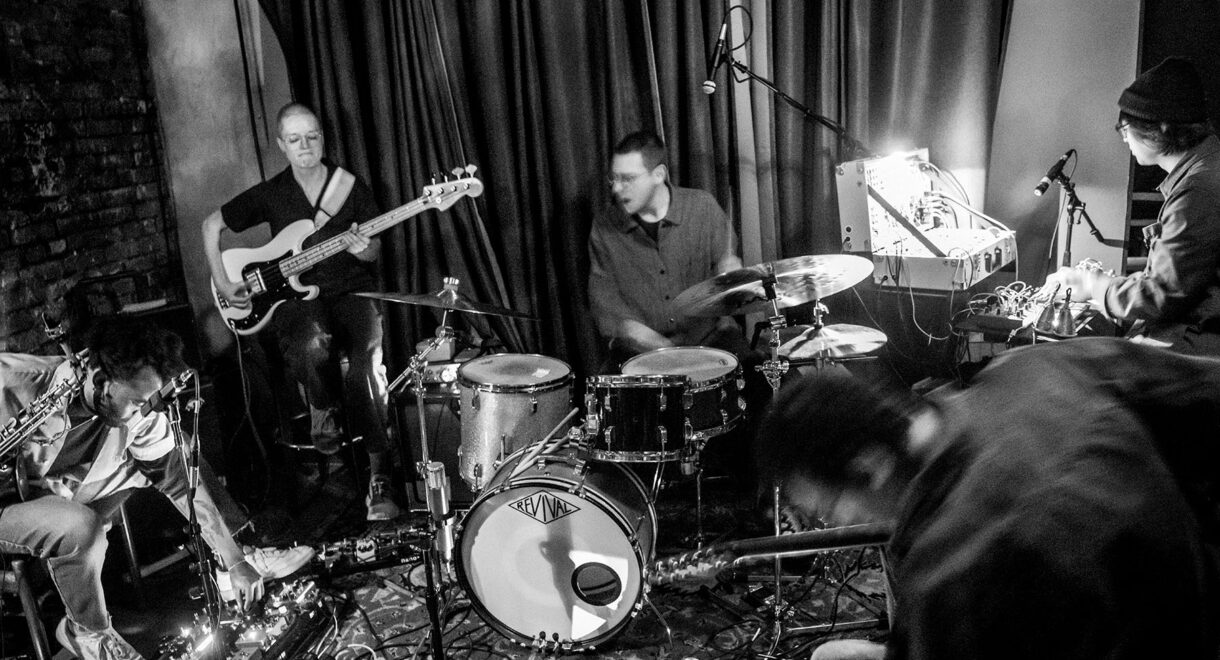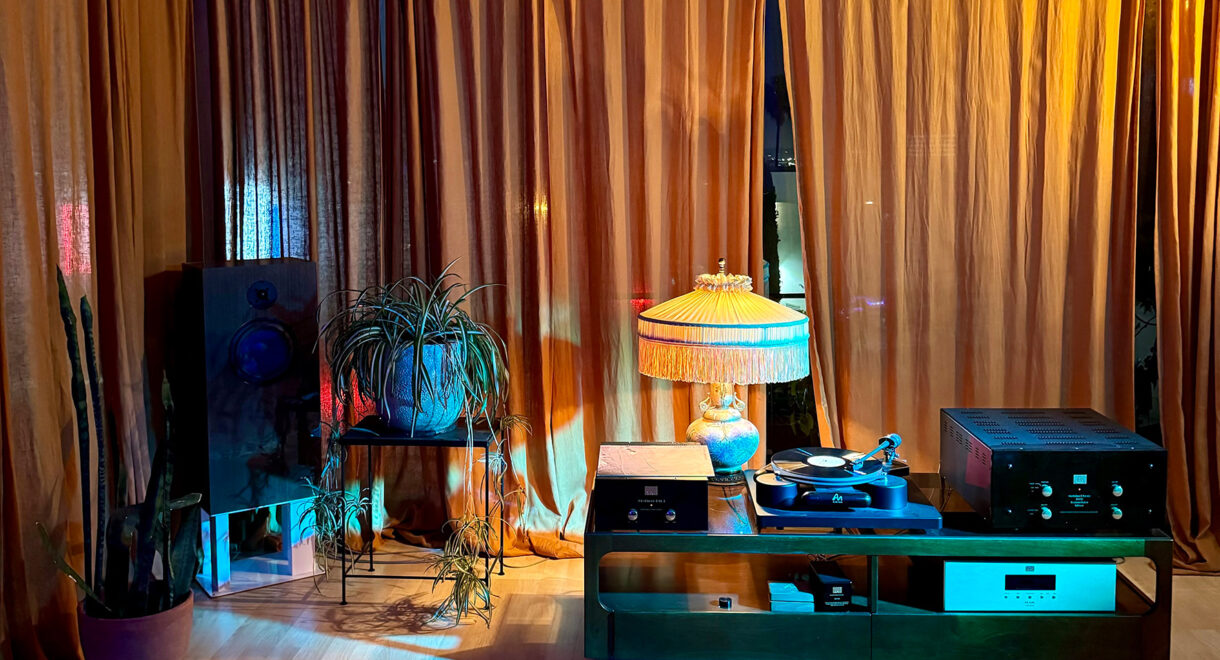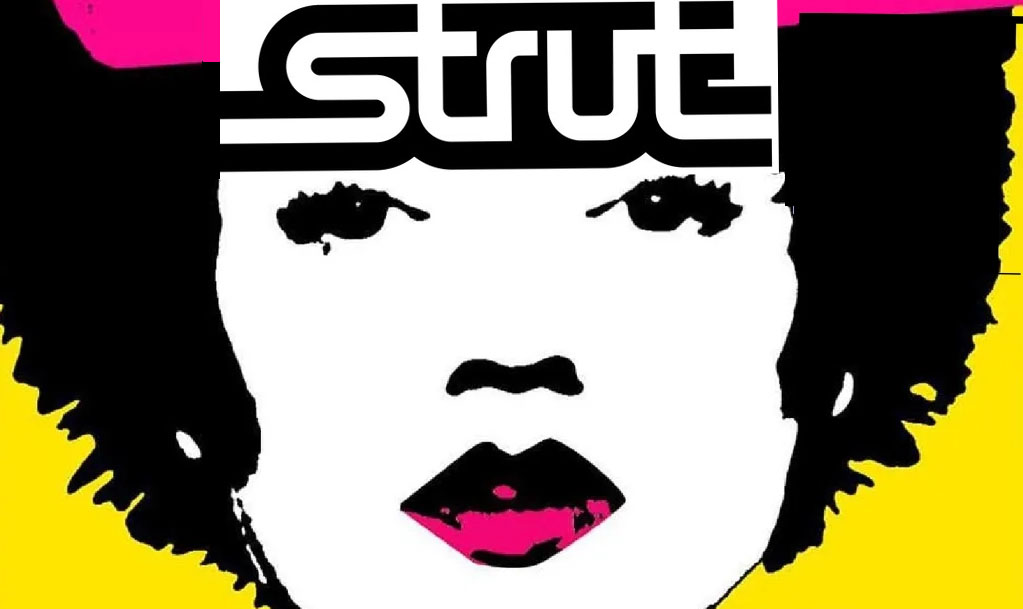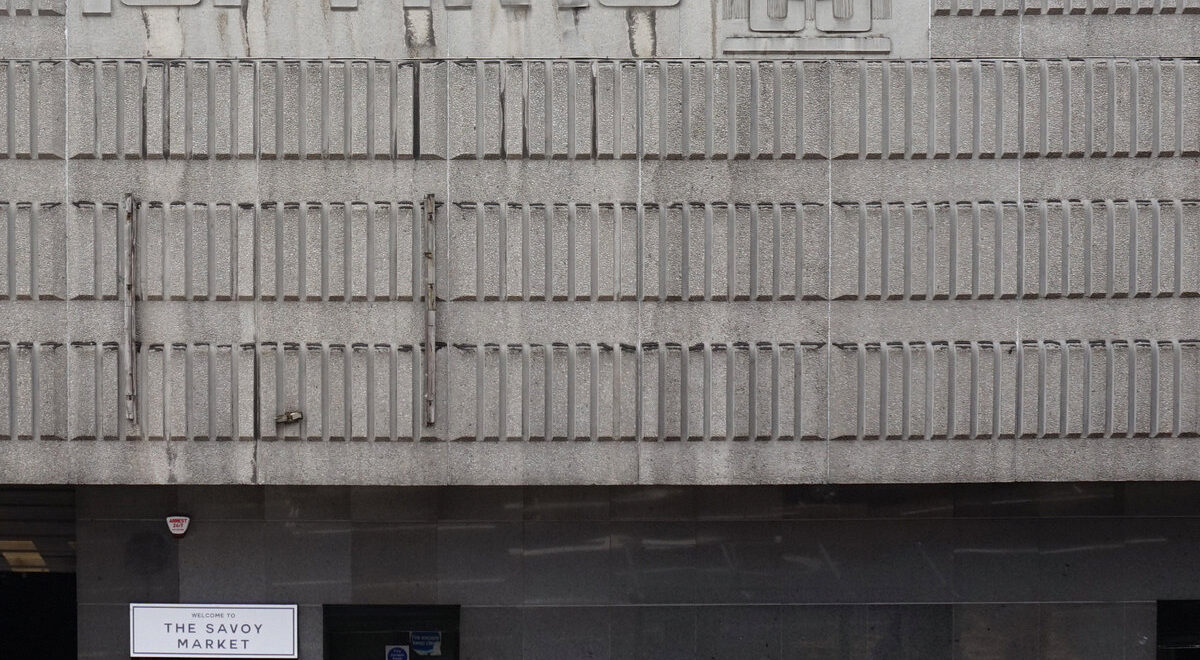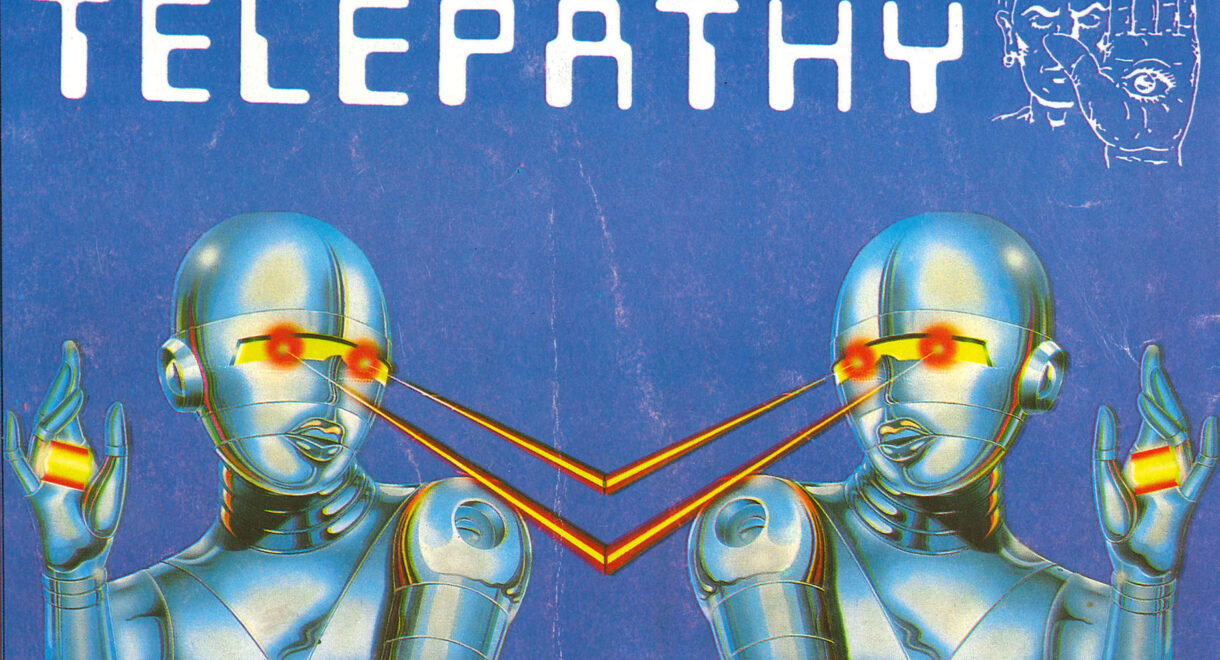In conversation with Small Medium Large, a new quintet from the burgeoning new West Coast jazz & improvised music scene. In 2018, LA-based jazz and post-rock guitarist Jeff […]
In Conversation: Time is Away on their autumnal compilation ‘Searchlight Moonbeam’

Time is Away’s latest compilation Searchlight Moonboom is out tomorrow via Efficient Space.
Time is Away is the London-based DJ / historian / artist duo Jack Rollo and Elaine Tierney. Longtime NTS residents, the couple work across radio, research and site-specific projects exploring the relationship between time, place and power through music and sound. Their beloved monthly transmissions on NTS play out like sonic tapestries weaving together spoken word and field recordings with impeccably sequenced and heartfelt selections from the duo’s exceptional record collection that spans classical, folk, indie, dub, ambient, experimental, techno, and much more.
Now in their tenth year, Time is Away has naturally grown into curating compilations. Ballads, first released as a mixtape on Fleetway Tapes and then as a vinyl compilation on A Colourful Storm, was one of our favorite releases of last year and soundtracked much of our winter home listening hours. The duo’s highly anticipated second vinyl compilation will be released tomorrow via Michael Kucyk’s Efficient Space…
Searchlight Moonbeam follows in the footsteps of the label’s seminal Sky Girl compilation and is unsurprisingly another bar-raiser and future classic. The “autumnal dreamscape” bridges 90 years of music presenting “an imagined community” with timeless-sounding music from contemporary artists alongside obscure lost projects that clearly deserve more attention. Read an excerpt of this perfect writeup from All Night Flight Records:
“Every now and then a collection of songs are compiled and windows on worlds you knew nothing about before open up. New contexts are formed around things you might have heard of but never properly ‘got’… Yet despite the wide-ranging and occasionally disorienting references, there’s nothing clever or self-congratulatory about this collection, and if you sat back and closed your eyes you might imagine happily listening to these records on an autumn afternoon at their home.”
In Sheep’s Clothing’s Phil Cho spoke with Jack and Elaine over Zoom to learn more about Time is Away’s beginnings, pre-internet music communities, inspirations, and some of their personal favorite mixes.
2023 marks the tenth anniversary of Time Is Away’s first broadcast on NTS Radio. How did the project first begin?
Jack: I was working in a record shop called Kristina Records in Dalston. We opened around the same time as NTS Radio. All the DJs that started the station were regular customers and the shop was part of a series on NTS called Record Store Rotation. Femi (founder of NTS) is a big music collector with a really interesting taste in weird records. I guess we hit it off through that. Femi always wanted to know what I would recommend from the shop so we developed that kind of relationship between customer and record shop guy. For various reasons, I ended up leaving Kristina Records and at that point Femi said, “You and Elaine should have a show on NTS.” He’d probably seen Elaine and I DJ together by that point.
Elaine: When we were offered the opportunity to have a show, I think they just presumed that we’d play some cool records and that would be it, but we both kind of individually had the same idea of doing something that was a little more considered. We’d identify a theme and attempt to locate music, spoken word, and field recordings that in some way played to that theme. For the first few, we tried doing it live, but it didn’t allow for much subtlety.
J: Quite quickly, it became something that we made together at home at a slower pace, heavily edited, and “created,” if that makes sense. That’s only got more so as it’s gone along with more attention to the edits, the research, and the construction of the show than if you were just to play some records. I guess we also wanted to do something that had a more literary, historical, or artistic bent to it that was more than simply formalism in music. More than simply this music sounds good next to this music. Hopefully there’s some meaning being made beyond just putting records together.
Your shows usually take a narrative / storytelling type of approach. How would you describe your process for these pieces? Do the recordings/text/themes typically come before the music?
E: I suppose it really depends. It can start from music, a bit of text, or an idea. Quite often an unformed idea can become the prompt to making a show. In terms of how we approach it, I think we bring different perspectives and skills to it. I’m a historian, that’s my day job. I work in a big museum in London. I see Time is Away as being another way of doing history. Although I don’t have to produce the same sort of output, it’s not a 80,000 word book or journal article, a lot of the ways I approach preparing for the shows, and particularly the research for some of the more detailed and wordier shows, is the same as if I was producing those more scholarly outputs. I find it really difficult to think in straight lines so having this distinctive but linked space which lends itself to thinking in circles has been really nice. One of the things that’s happened over the last ten years with Time is Away is that some of the questions and themes that we come back to, particularly relating to place and specifically urban place, have become increasingly close to aspects of my academic work.
J: One thing I’d say about it is that because we’re a couple and we’re together as much as we can be, it’s hard to say where life stops and Time is Away begins. You might have an idea at five in the morning and have a conversation about it. The more you’re together, the more intuitive you can be and intrinsically know at what point to bring the other in.
For me, I went to art school. It was an amazing and very free experience, but I didn’t come out of it knowing what I wanted to do. One of the things I did identify while I was there was that I needed a method or set of rules for starting something, and then also a set of concerns to make work that actually mattered to me. I think when you’re 18- 20 it’s hard to know what matters to you. If you’re me, you’re just trying to please people and that doesn’t really get very far in terms of making something. I ended up just looking elsewhere and working in record shops, which really allowed something to come from an unlikely place, essentially DJ-ing, to become something that is a bit more like an art practice for me, or at least feels like a creative way of working that is fulfilling. I think we’re lucky in that we’ve been able to find something which works.
“The word that gets used a lot is narrative, and I think narrative is sort of it, but also I think it’s association. It’s more like a kind of juxtaposition or collage.”
Jack rollo
I was actually going to ask about your background. It totally makes sense how the show came about with your historian and record store experience.
E: We’ve also both been playing records out for a long time. That’s how we first met.
J: Yeah it was definitely through music. We both came out of indie and experimental music. It’s a different sort of thing than the standard dance or hip-hop based DJ culture. There’s more of an emphasis on the full song, and something where it’s like drama. It’s not necessarily about something being expertly put together, but more like a moment where everybody collectively draws breath before something dramatic happens in a sort of DJ capacity in a club. I think our backgrounds in indie clubs and stuff like that is an important part of Time is Away.
I remember really clearly going to start work at the record shop and having this conversation a year or so in. A lot of people there said they didn’t care about lyrics. That just kind of confused me because that’s the content for me, or at least that’s the straight route to the content. If the lyrics are bad, it’s not a good piece of music. Doesn’t matter if the music is great. It’s a complete atmosphere. Obviously now you can fiddle around and edit it so it doesn’t have the bad lyrics, but that’s always been a big part of how we approach and do things. The word that gets used a lot is narrative, and I think narrative is sort of it, but also I think it’s association. It’s more like a kind of juxtaposition or collage. It’s a sort of associative thing and maybe that is a narrative, but it’s certainly not straight lines.
Your first compilation ‘Ballads’ was originally released as a mixtape. Did this project also start from a mix? How did your approach differ from a radio show or mix? What was the inspiration behind the selections?
E: We were directly approached from Efficient Space to see if we’d be interested in putting together a compilation. It was actually really nice starting something from scratch because although it was a really great experience doing Ballads, the sort of translation of the tape to the record involved having to swap in but also keep things to some extent, whereas this time all choices were open to us.
J: We’re both really big fans of Efficient Space, but particularly, Sky Girl was a huge deal for us. Personally, in terms of the kinds of things we do, it was a huge lighthouse in the gloom. Two people putting together songs just based on how they felt, and songs that are, first of all, songs. It felt very familiar in a lot of ways. There’s an indie sensibility there.
What I really like about it Sky Girl as a compilation is that I feel like if you went on holiday with a group of friends who weren’t into music, and that was the one thing you had to listen to in the car when you’re driving around, by the end of it, they’d know all the songs and they would like them. They’re just good songs, even though they happen to be super obscure record collector stuff, like private press, real people, failed psych lounge acts, macho poetry, etc. There are all of these different little threads coming together that are really the stuff of record collectors, but actually they made something which is incredibly listenable and universal somehow out of that.
In terms of putting together Searchlight Moonbeam… We move very fast through music because we have a show to do every month. We play out quite a lot, and you kind of churn a bit. Playing something once is normally enough. We don’t want to repeat ourselves, but we also have always been into that kind of indie music aesthetic of like, “I’ve listened to this song thousands of times, and this song means everything to me.” Also, because it’s on vinyl and it’s a physical object with a lot of money, time, effort, and resources put into it, it needs to have something where you can really return to it. It’s not like a radio program where maybe you listen to it once or, maybe if we’re lucky, people listen to it a few times. Generally speaking, creating something that has some lasting territory in people’s lives is always something we wanted to do.
E: There’s also the other aspect of it, which is that it’s a collective effort. The compilation is inherently collective because you’ve got bits of music produced by different people in kind of distinctive contexts, but then adding on to that working with Michael (Efficient Space label head). We also invited our good friend Jeremy Atherton Lin to write something in response to the compilation so it’s got this kind of fantastically evocative essay which is also part of the compilation. Then there’s Penny Davenport’s artwork. So you have an object which embodies the sort of collaboration and collective activity that’s really important to pretty much everything we do.
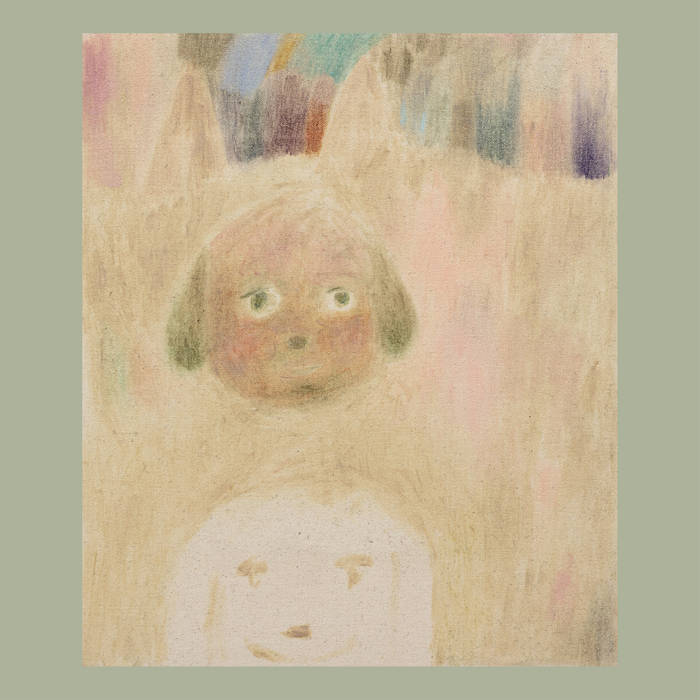
“The way we both came into being fans of music is through an appreciation of the worlds suggested by and built around particular songs and types of music.”
Elaine Tierney
J: And those links have to do with these disparate networks of people that are into stuff across the world. Penny, particularly, doesn’t live in London, and the reason we know about her is via both being into this blog years ago called Toys and Techniques. It’s long defunct, but this guy was right on loads of interesting stuff early on. I think it mostly came out of an original network of American Broadcast fans. Back then, when a particular band meant something to people, they all got together and started networks and contacted each other via the internet. I think those kinds of connections are exactly what we’re talking about.
E: It’s all about making something that you want to share.
J: Yeah, exactly. Something you want to share. We’re both very big fans of the Pastels and the Vaselines in Glasgow, K Records in Olympia, Comet Gain in London, Slumberland, all these connected bands and labels. Even pre-internet, people contacted each other through fanzines and letters. There was that kind of network of knowledge and mutual support where even when you don’t really know someone, you just know they’re into what you’re into. I guess that network is something that this compilation could provide some clues towards.
E: I also like the idea of having a compilation on vinyl because it’s an invitation for people to sit down and listen for a while. I suppose one of the ambitions for Ballads, and I think even more so for Searchlight Moonbeam, is it’s supposed to create a mood and to provide a kind of setting in which people can listen as much as they want to.
J: I guess that’s part of everything we do. I think the greatest way to listen to music is looking out a bus or train window. It might be a solo experience, but it feels collective because you’re there with the music and the people that made the music or chose the music, and you’re listening in a place, landscape, or setting. I think that’s something we always aim for, or at least that’s one of the ways in which music hits us. This is slightly abstract, but quite often if I’m listening to music out and about, if something’s good, I find myself looking at the sky or looking as far out as I can. Trying to get that kind of moment where you’re suddenly transferred or transfixed, is hopefully the mood of the compilation.
“I think a lot of what we do is deliberately a little bit obtuse or obscured, and I think we look for that in music as well. It can be super simple, but it can’t be too straightforward.”
jack rollo
Getting into the tracks… I first heard that CHEN MING-CHANG ‘Rainwater’ tune in your end of the year best of 2022 show. It’s beautiful and such a Time is Away tune, if that makes sense. What makes a “Time is Away” track to you?
J: With that one, it’s from a film soundtrack and there’s some spoken word, a repeating melody that’s quite sparse and pretty, and the rain sound. It has an atmosphere. I think we thought about that in terms of the first song, Bo Harwood & John Cassavetes “No One Around To Hear It,” because you start with a real kind of old fashioned song that could be done in a number of ways, but the way it’s done is very fragile and slightly broken. I think we wanted to immediately go into something that was deconstructed and atmospheric.
E: In terms of what makes a Time is Away song, I think you know when you hear it. It can come from anywhere, it can sound like anything. I suppose there are a few things it won’t be… It won’t be deconstructed noise. There’ll have to be some element of repetition, and potentially even melody. Quite often, emotion feels like an important sort of quality. Well, not emotion, but some sense of drama that’s not necessarily overt. I suppose it’ll also represent a multiplicity of different points of reference. I think it’s kind of striking when looking at the compilation. The first two songs are bits of film music, and that wasn’t at all deliberate. One of the things that we’ve become more aware of as we’ve gone on with the radio show is that to some extent we’re making films without pictures.
J: If what you’re doing sounds like music that should accompany visual images, why doesn’t it accompany visual images? But then if you had the visual images, you’re almost overthinking for the person… That’s the difference between radio and TV or film. Radio allows you to be very much in place. The sound can either be going past you or you could be picking it up clearly and directly. With Time is Away, it’s music that has a little bit of mystery to it. I think a lot of what we do is deliberately a little bit obtuse or obscured, and I think we look for that in music as well. It can be super simple, but it can’t be too straightforward.
E: I suppose there needs to be some kind of element of world building as well. So there’s a sense of that. The way we both came into being fans of music is through an appreciation of the worlds suggested by and built around particular songs and types of music. That’s what I’m always looking out for.
There are quite a few contemporary tracks featured in this compilation. Was that intentional or more a product of your recent headspace? I read that in recent years, you’ve spent more time than before with new music.
E: It wasn’t super deliberate. A number of the contemporary musicians on the compilation are people we’re friends with. I think that’s quite a nice element.
J: Will Memotone, Gyeongsu, and Benjamin, who runs the label Gyeongsu and Yzabel’s song came out on, are all friends. There’s definitely an element that we wanted to ground it in the people we know.
E: I think we’re also in a moment where there’s lots of really good new music.
J: Yeah, I think it’s as simple as that. We definitely have an interest in the historical and the past, but also there really is a lot of good stuff around at the moment. I think we probably have both experienced spending most of our lives hoping for some music that doesn’t quite exist. For example, the Un record “Fast Money Blues” on the compilation feels representative to me of what I hoped Royal Trux would sound like. I feel like maybe in the last 10-15 years, people of our generation with some of the same sensibility have come of age. Music has started to sound like what I want it to sound like. I don’t know if that’s just to do with an internal process, but I think that’s reflected in the newer stuff that’s on there. The songs aren’t straightforward. They can’t necessarily be pinned to genre. They have that atmosphere. Will Memotone’s O.G. Jigg track “Jesus Is My Jam” – you couldn’t exactly say what kind of music that is. It’s quite musical. He’s clearly a trained musician, but the track also has lots to do with electronic and dance music and folk. It’s kind of an in-between thing.
With the recent sound exhibitions and compilations, Time is Away seems to be entering a new chapter with the turn of the decade. Where do you see the project today and where it’s going?
E: The big reason we were able to do so much in 2020 is COVID. As horrific as COVID was individually and collectively, it meant that we had a lot of time at home together. We were both furloughed from work. Just having that time made such a difference in terms of enabling us to focus on Time is Away. The exhibition happened just before COVID so that was something we were already moving towards. In terms of the compilations and the increasingly sort of elaborate radio programs and other commissioned work, it was just having a couple months of focused time. One of the things that we’ve got coming up next year is a residency as Time is Away in Switzerland at a place called La Becque, which will be another three months just to focus on the thing that we do around our day jobs.
J: That’s the thing, Time is Away is cobbled together in the time around both of us working full time. I think it’s really important actually to have some kind of economic freedom when you make things that aren’t necessarily palatable to everybody. I always think about Throbbing Gristle where, apart from Genesis, they all did jobs, whether it was dancing in clubs, working on record cover design, electronics, or whatever. They had financial security which allowed them to be completely out there aesthetically. No one could say, “I like this, I don’t like this, I’m going to withdraw your money.” They could do whatever they want, but then you’ve got to keep it going around always getting drawn back down to earth by your day job. I think that it’ll be really interesting to see in this residency how it feels to do it full time for three months.
E: I think we’re both interested in affecting more collaborations with other practitioners of various kinds because that feels quite generative in terms of the works that we make. We’re interested in doing more writing that results in episodes of Time is Away, or related projects. We’ve also got to the point where, because we’re combining so many elements from different bits of music, there’s now this very sort of fine line. Is it a collage of other people’s stuff? At what point does it become a sort of entity in itself? We haven’t quite resolved how Time Is Away takes up space. We got a bit of that with the exhibition back in 2020, but I think there’s some more thinking and experimenting to be done there.
Lastly, we like to share as much music as we can on these pieces. Usually we ask for selects, but I thought it would make more sense to ask what are some mixes you’ve been listening to recently?
Our friends Lizzie and Tim run a great label and mix series in Glasgow. This is the first mix in the series, but check the whole lot.
There’s a beautiful bar in Amsterdam called Murmur where we have played a couple of times and last time we were joined by our friend Cara Mayer who makes amazing radio and DJs as Cardboard Lamb. They recorded her set and you can listen here.

Our friend Tom who runs All Night Flight records released this totally immersive mix of piano music and room sounds by Japanese artist and occasional DJ Atsuo Ogawa which is a huge favourite. Link here.
Back in 2017 Michael Tanner who performs as Plinth made this series of mixes for NTS, focussing on early music, which we still dip back into regularly.




